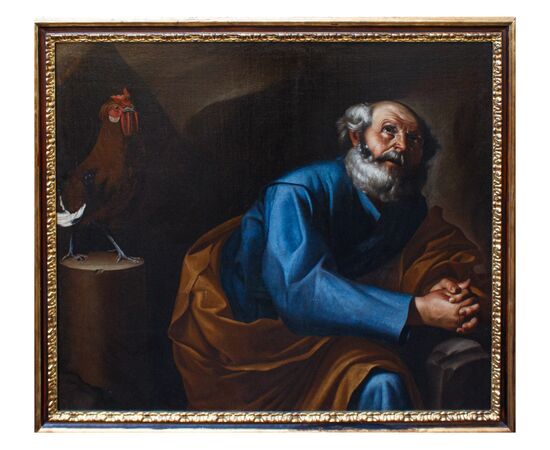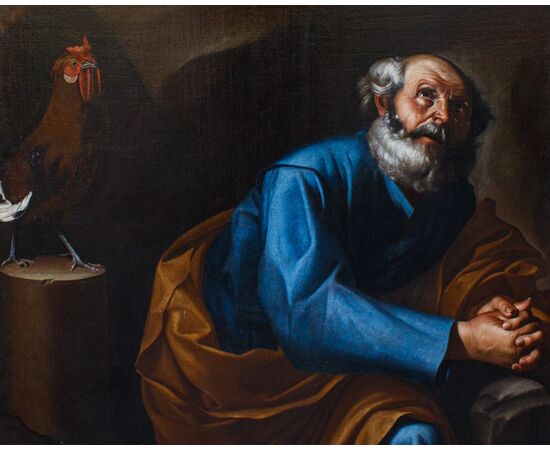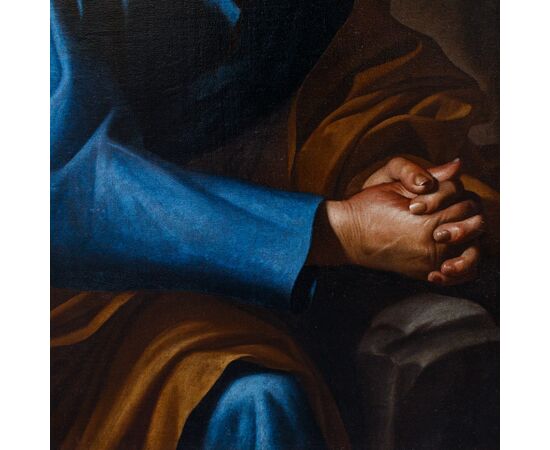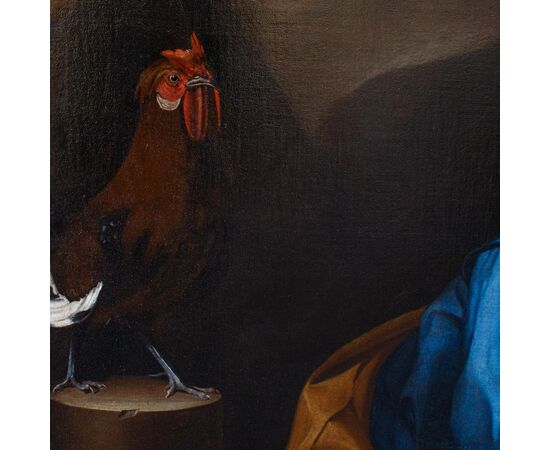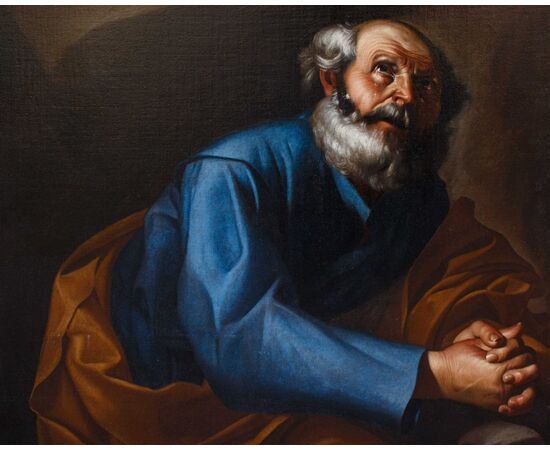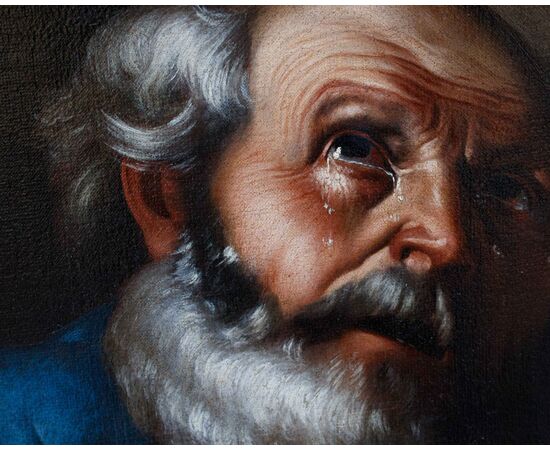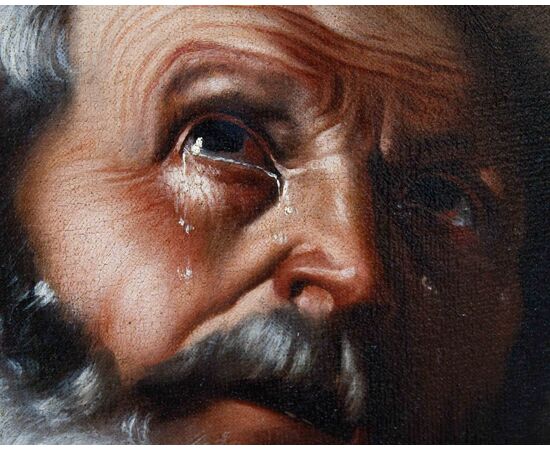The Repentance of Saint Peter
Cesare Fracanzano (Bisceglie, 1605 - Barletta, 1651)
The Repentance of Saint Peter
Oil on canvas, 112 x 128 cm, with frame 159 x 184.5 cm
The strong stylistic and formal consonances allow us to identify the hand of Cesare Fracanzano in this canvas. Fracanzano was born in Bisceglie in 1605, son of Alessandro, a painter originally from Verona, who had married Elisabetta Milazzo from Barletta. He received his first rudiments of painting from his father, following him, together with his brother Francesco (1612 – 1656), also a painter, in his movements. It was fundamental for his training and pictorial maturation to choose to move to Naples, around 1616, and enter the workshop of Jusepe de Ribera (1596 – 1652). Cited by De Domenici in his “Lives of Neapolitan Painters, Sculptors and Architects”, Fracanzano found a very lively environment in Naples, where some of the most important artists of the century were working and where the multiple pictorial directions of the time met and clashed at the same time. Naturalism and Caravaggism moved together with classicist instances, sometimes creating solutions that seem to proceed in parallel. Returning to Barletta, the city where he would marry and where he would carry out many commissions, he would nevertheless continue to travel for work. In particular, he was always sought after in Naples, a city where many of his works are preserved, cited in numerous archival documents, where the high price that was necessary to pay for them is also highlighted. A painter strongly influenced by Ribera and the great Caravaggio current, however capable of assimilating and uniting other currents (for example, from the 1940s the painting of Giovanni Lanfranco, active in Naples in that period), expresses in this subject, recurrent in his work, all his quality and the very strong emotional charge inherent in his work. The repentance of Saint Peter, a moment of great emotional impact and profound religious significance, takes place shortly after the arrest of Christ, as told by the Synoptic Gospels. Jesus, shortly before, predicted the breakdown of his apostles and replied to Peter, who arose at these words, that he would deny him three times that very night, before the rooster crowed. After the arrest of the Master, Peter was recognized as a disciple but denied three times, before hearing the song of a rooster, repenting and weeping bitterly. The encounter with Ribera is evident in the iconographic choice of Fracanzano to represent San Pietro in half-length, slightly three-quarters with a tunic and cloak characterized by wide folds, with strong contrasts of light and shadow. The expression of pain on the face is underlined by the expressiveness of the eyes, characterized by a strong brightness and the transparency of the tear that runs down the face. The chromatic fabric, played on low tones, the broad and rapid brushstrokes, create a portrait that is anything but idealized, of such intensity as to make the pictorial matter itself vibrate. The pictorial quality of Fracanzano is fully expressed in some details, such as the hands, beard or hair, of rare beauty, rendered with great mastery, in the profound attention to detail and naturalistic research. The attention to naturalistic data, present in some of his works, is expressed here in the beautiful rendering of the rooster, taken from life, which contrasts with the rough rocky background. His works are visible in some of the main Neapolitan churches, such as S. Domenico Maggiore, S. Maria della Sapienza, Santa Maria della Speranza and Apulian ones such as the Cathedral of Santa Maria Maggiore in Barletta, the Church of Santa Maria di Nazareth in Barletta, or the Cathedral of Gravina and in important museums such as the Museo Nazionale di San Martino, the Quadreria dei Girolamini in Naples, the Museo Diocesano di Andria or the Museo del Prado in Madrid.
The painting is accompanied by the historical-critical expertise of Dr. Arabella Cifani.

